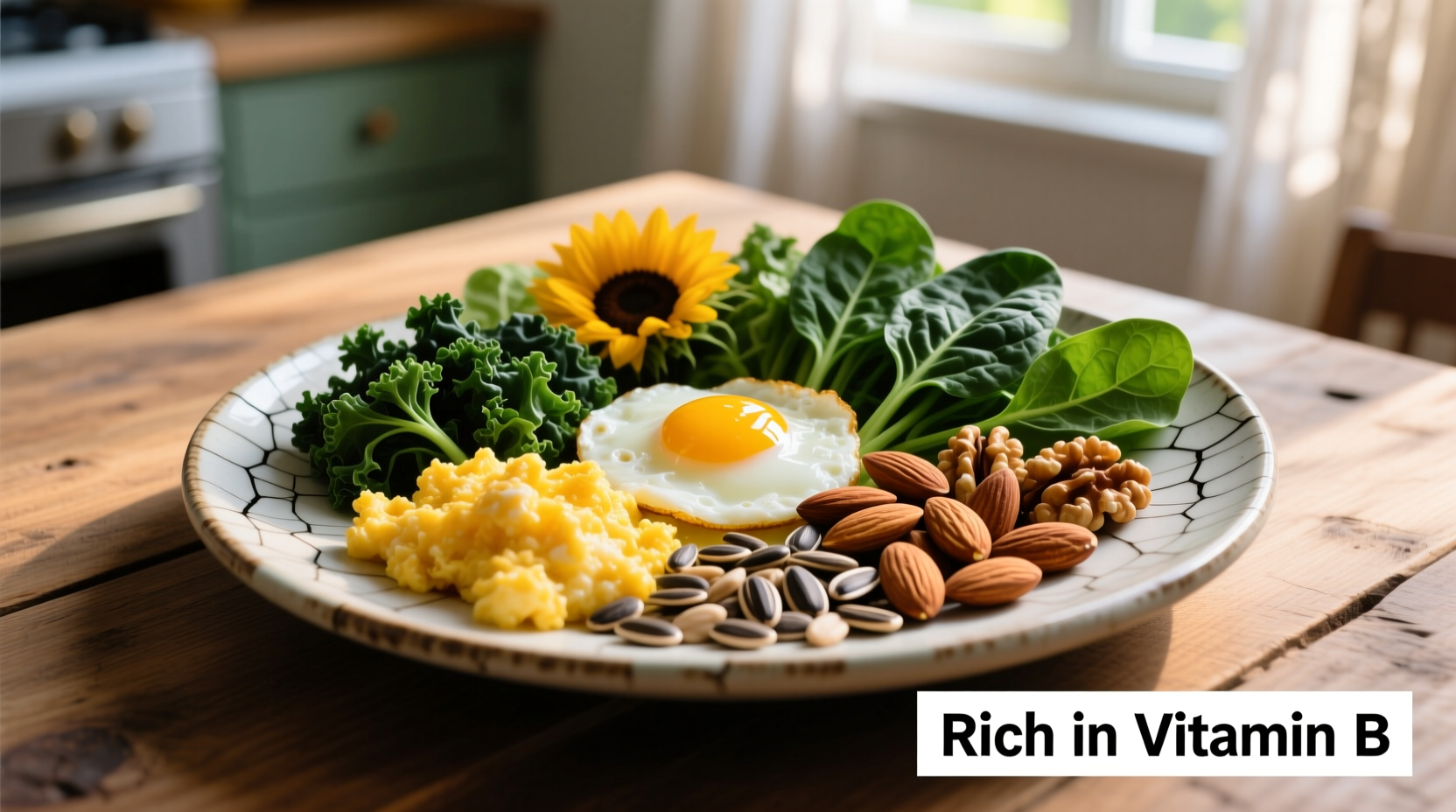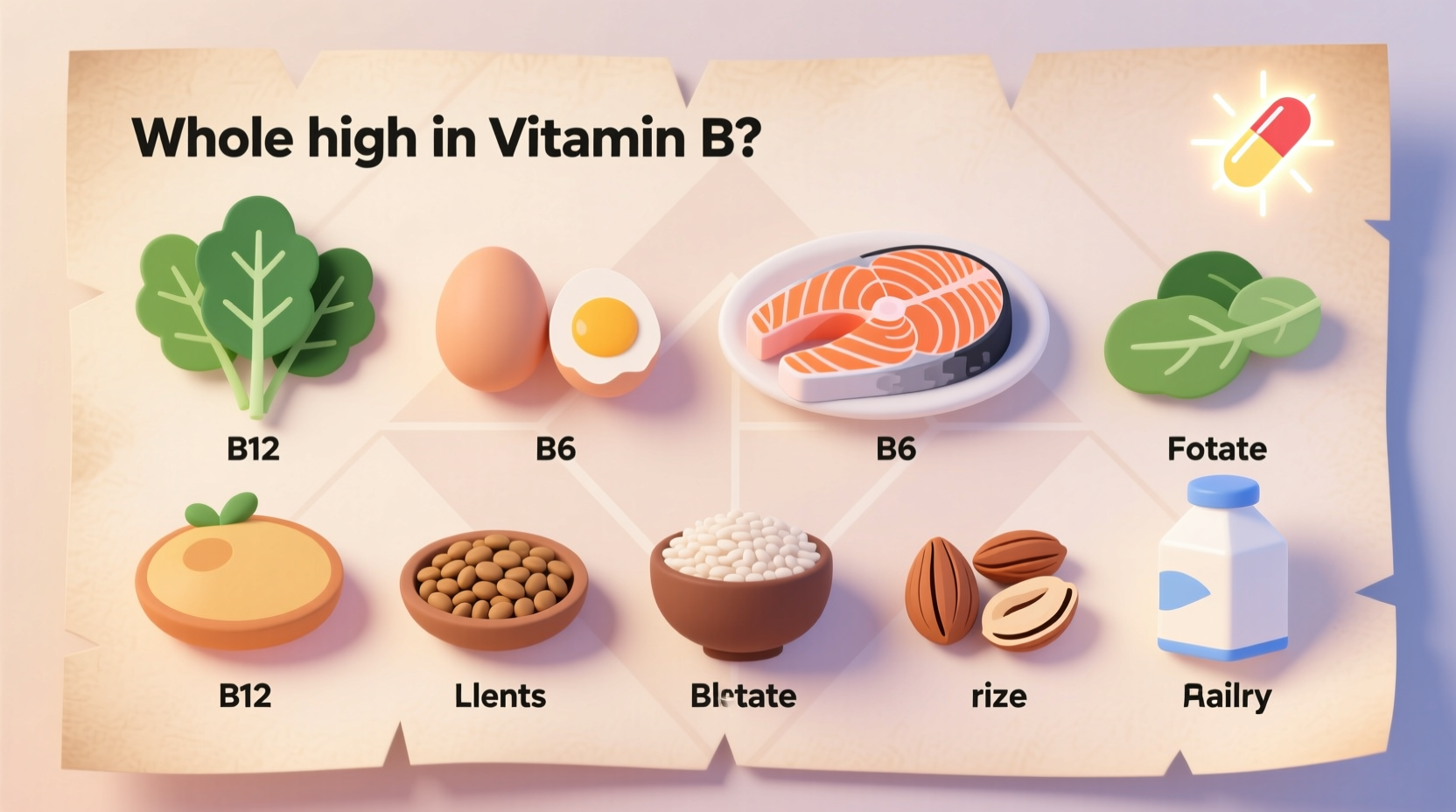If you've ever wondered what foods contain vitamin B or which dietary sources provide optimal B vitamin intake, you're not alone. Vitamin B isn't a single nutrient but a complex of eight essential water-soluble vitamins that play critical roles in energy production, brain function, and cell metabolism. Unlike fat-soluble vitamins, your body doesn't store B vitamins, making regular dietary intake crucial. The most concentrated natural sources include organ meats (particularly liver), eggs, dairy products, legumes, whole grains, nuts, seeds, and leafy green vegetables.
Understanding the Vitamin B Complex
The B vitamin family consists of eight distinct compounds, each with unique functions and optimal food sources. While they often work synergistically, each requires specific dietary attention. Deficiencies in certain B vitamins can cause fatigue, neurological issues, and skin problems. According to the National Institutes of Health Office of Dietary Supplements, many adults don't consume adequate amounts of several B vitamins through diet alone.
Why B Vitamins Matter for Your Health
B vitamins serve as coenzymes that help convert food into usable energy. They support red blood cell formation, DNA synthesis, and neurological function. Vitamin B12 deficiency affects approximately 15% of adults over 60 according to CDC data, while folate deficiency remains a concern during pregnancy. The bioavailability of B vitamins varies significantly between food sources, with animal-based foods generally providing more readily absorbable forms.
Vitamin B Food Sources: A Comprehensive Guide
Each B vitamin has distinct dietary sources. Understanding these differences helps create balanced nutrition plans that address specific needs.
| Vitamin | Top 3 Food Sources | Serving for 100% DV* |
|---|---|---|
| B1 (Thiamine) | Sunflower seeds, pork chops, black beans | ¼ cup sunflower seeds |
| B2 (Riboflavin) | Beef liver, fortified cereals, milk | 3 oz beef liver |
| B3 (Niacin) | Tuna, chicken breast, peanuts | 3 oz tuna |
| B5 (Pantothenic Acid) | Mushrooms, avocado, sun-dried tomatoes | 1 cup mushrooms |
| B6 (Pyridoxine) | Chickpeas, salmon, potatoes | 1 cup chickpeas |
| B7 (Biotin) | Egg yolks, almonds, sweet potatoes | 2 whole eggs |
| B9 (Folate) | Spinach, lentils, asparagus | 1 cup cooked spinach |
| B12 (Cobalamin) | Clams, beef liver, fortified nutritional yeast | 3 oz clams |
*Daily Value based on 2,000 calorie diet. Source: USDA FoodData Central
Practical Integration into Your Daily Diet
Building a B-vitamin rich diet doesn't require drastic changes. Start your day with a spinach and mushroom omelet (B2, B5, B9), include chickpeas in your lunch salad (B6), snack on sunflower seeds (B1), and enjoy grilled salmon for dinner (B3, B6). For vegetarians and vegans, fortified nutritional yeast provides substantial B12, while legumes and leafy greens supply other B vitamins.
According to research published in the American Journal of Clinical Nutrition, cooking methods significantly impact B vitamin retention. Water-soluble vitamins leach into cooking water, so steaming vegetables preserves more nutrients than boiling. Quick cooking methods like stir-frying maintain higher B vitamin levels in foods.

Special Considerations for Different Diets
Vitamin B12 presents unique challenges for plant-based diets since natural sources are almost exclusively animal products. The Academy of Nutrition and Dietetics recommends fortified foods or supplements for vegetarians and vegans. Older adults often need supplementation due to decreased absorption capacity, while pregnant women require increased folate intake from both natural food sources and fortified products.
Food preparation techniques impact B vitamin availability. Soaking and fermenting grains increases B vitamin bioavailability by breaking down phytic acid. Traditional food combinations like beans and rice create complete protein profiles while maximizing B vitamin absorption through complementary nutrient pairing.
Maximizing Your Vitamin B Intake
For optimal B vitamin absorption, pair vitamin-rich foods with healthy fats since some B vitamins require fat for proper assimilation. Avoid excessive alcohol consumption which interferes with B vitamin metabolism, particularly B1, B6, and folate. Store B vitamin-rich foods properly as light and heat degrade these sensitive nutrients. Incorporate a variety of colorful plant foods daily to ensure comprehensive B vitamin coverage through diverse dietary sources.











 浙公网安备
33010002000092号
浙公网安备
33010002000092号 浙B2-20120091-4
浙B2-20120091-4